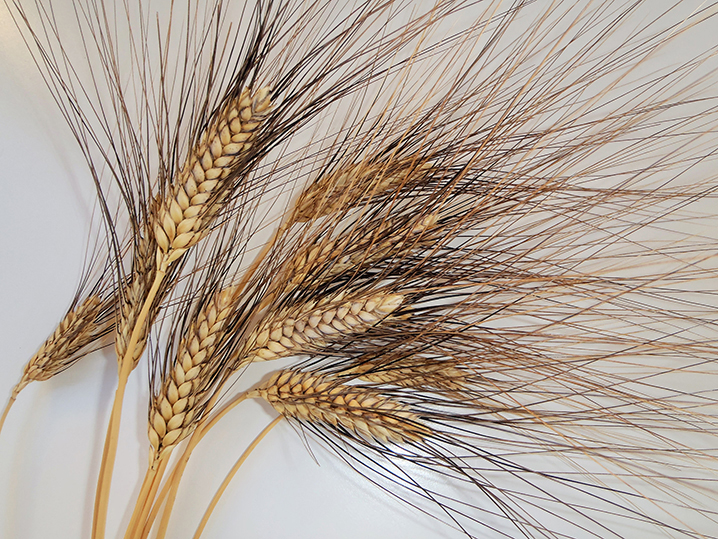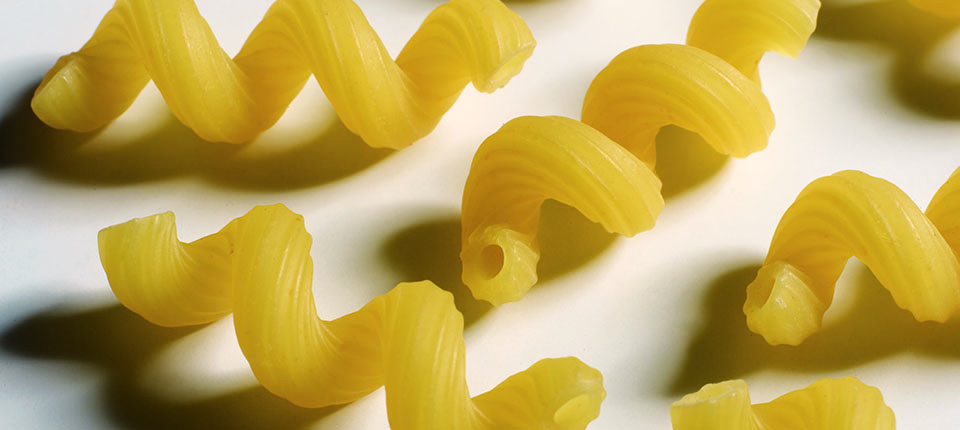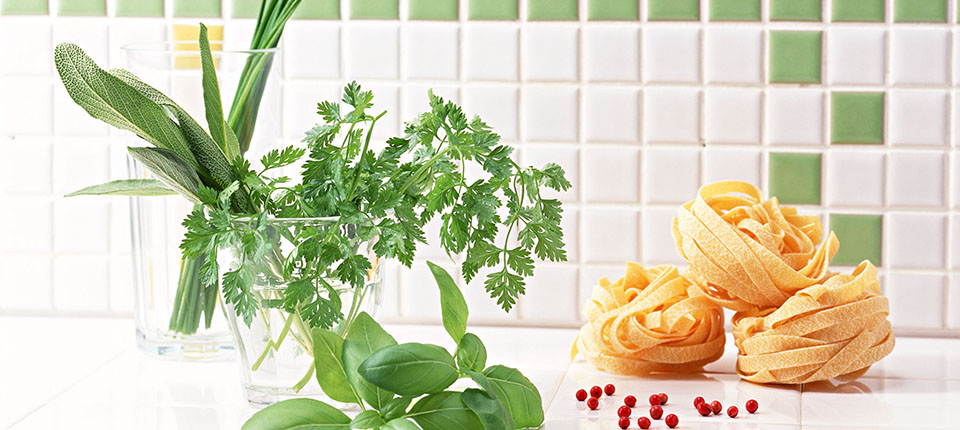
Innovation potential and impact of ancient varieties. Promotion strategies for the durum wheat variety Senatore Cappelli
17 February 2016The use of the old variety of durum wheat, Senatore Cappelli, in the pasta making process may give value to the end product which is much appreciated by the consumer. With extraordinary opportunities for growth.
by Silvia Folloni (Open Fields S.r.l.), Ilaria Mazzoli (Open Fields S.r.l.), Roberto Ranieri (Open Fields S.r.l.) and Giacomo Zanni (Università di Ferrara)
Mostly in Italy, but also in other western countries, the market shows interest in local, indigenous breeds and varieties. Reasons are different and could be allocated to different spheres:
- environment: breeds and old varieties are often linked to organic agriculture, promote the protection of the landscape and the recovery of marginal areas, preserve biodiversity;
- history: used in the past, near or distant, now they represent a connection with the family or territorial roots, arousing “nostalgia” feelings for a time that you want to retrieve, encouraging a process of individualization as opposed to standardization of industrial food;
- naturalness & health: considered natural and simple, they are also perceived as healthy, even when transformed, thanks to transformation techniques that preserve the nutritional quality of the product;
- ethics: they are perceived as a value supporting local production, as well as animal welfare and the defense of life on earth.
- All these trends can be interpreted as a manifestation of a feeling as opposed to the concept of “innovation”, that is to say a kind of fascination with the past, justified by the mistrust of side effects of the technological progress: a sort of nostalgic “retromania”.
But this trend, in our opinion, may also be framed into a more complex phenomenon, located somewhere between the past and the future, which we can call the “innovative nostalgia”. In general, nostalgia (from the Greek nóstos, homecoming, and álgos pain) is a feeling familiar to everyone, linked to the desire to relive their past and their roots. The Innovative Nostalgia connects the present with the ancient, and refers to moments of the youth of consumers, of families, of a certain area, or to the ancient history of humankind. Because of its universal nature, nostalgia finds many applications in terms of marketing, fashion and engines, from music to movies, to food products (Meo, 2004).
Especially in the most successful cases, the commercial use of nostalgia and vintage is not limited to the mere recovery of symbols connected to the time past.
The nostalgia effect is most effective when it is not based on a mere repetition of the old, but when it is associated with new technologies or design, having a synergistic effect with the elements indicated to enhance memories (Schiavone, 2010). In other words, it is a “return to future”, future perceived as more natural and sustainable compared to the present.
The number of research projects funded in the last 10 years shows the interest of the Italian institutions (provinces, regions, ministries, chambers of commerce) towards the recovery of ancient and native breeds and varieties. Some examples of success, available in the market, are the Verna wheat in Tuscany, the “Miracle Grain” wheat in Emilia, the Annurca apple in Campania, the Tabacchiera peach in Sicily, the black pork sausages and Parmesan cheese made from the milk of the red cows in Emilia Romagna, the donkey’s milk, the Cinta Senese.
The ancient grains phenomenon has fully exploded in the United States, with the recent introduction of ancient cereals in the references of the most important food groups, such as General Mills and Kellogg’s. These cereals respond to a desire for “super” food, magically powerful for our health and are perceived in their opposition to modern wheat, which often undergoes a deep refining process (BBC News, December 2014). At General Mills, research and market tests, indicated that consumers are interested in the ancient grain concept and agree to pay more for products that contain them. Even though the interviewed people often were not able to give a definition of ancient grains, they always associated them with simplicity and health. [hidepost]
On the product packaging Cheerios + Ancient Grains, containing spelt, oats, quinoa and Kamut® Khorasan wheat, they chose not to mention any effect on health: simply, they mentioned the presence of the ancient grains, following the trend of consumer interest (The New Yorker, October 2014).
Kellogg’s recently launched Kellogg’s Origins™, a blend of ancient cereals developed in response to growing consumer demand for simple foods prepared with recognizable ingredients (PR Web News Center, November 2015). The product contains wheat, rice, barley, Khorasan Kamut wheat, spelt and quinoa. It contains no artificial sweeteners, artificial flavors or hydrogenated oils.
The ancient grain, by far the most popular in Italy, and now growing in the US, is the Kamut Khorasan wheat (T. turgidum subs. turanicum). Kamut can be cropped exclusively under organic regime, it has never been changed in any way and seeds and milling grains are completely produced in Montana (US) and Alberta (CAN). Kamut Enterprise keeps a strict control of the value chain and protect the brand. This represents a guarantee for possible frauds. Being present with more than 3 products per point of sale (Gdo News, 5 novembre 2015) and with sales of dry pasta of 4.1 million euro in the first quarter of 2015 – a figure close to that of gluten-free pasta (5 million euro; TuttoFood, May 2015) – Kamut is a real success story. This story shall be of inspiration for the valorization of old Italian varieties. Initially focused on the evocative aspect – the finding Kamut seeds inside a pyramid in Egypt, communication is now mainly focusing on the potential nutritional and health benefits. These are the high selenium content, the improvement of symptoms in irritable bowel syndrome and inflammatory markers and improvement of the risk profile in patients with acute coronary syndrome (Sofi et al., 2013; Sofi et al., 2014; Whittaker A. et al., 2015). The ancient origins, the health aspect and organic cultivation are the selling points that have ensured its rapid growth in the market, supported by the growth of the whole organic sector.
For Senatore Cappelli durum wheat variety, the cultivation in Italy is an additional selling point. Senatore Cappelli wheat (T. turgidum var durum) is a durum wheat variety selected in 1915 by the famous agronomist Nazareno Strampelli. This variety is the most important result of the first period of breeding, which lasted until 1950, and which consisted in the selection of individual genealogical lines from Italian landraces, Syrian-Palestinian and North Africans, that were cultivated previously. The variety Senatore Cappelli raise the average yield of the field from 0.9 t/ha to 1.2 t/ha and occupied up to 60% of the Italian durum wheat surface until about 1950. Compared to local populations, the Senatore Cappelli was characterized by wide adaptability, a greater number of kernels per ear and an excellent quality of the obtained flour (Blanco, 2015). The plant has special features: its height (1.20 to 1.30 m) makes it more competitive towards weeds with less need for weeding. However, it lodges easily making it difficult to harvest. It is particularly suited for cultivation under organic agriculture and, more generally, in marginal areas, where it loses less in competitiveness compared to modern wheat. It presents excellent levels of protein, dietary fiber and antioxidants (Dinelli et al., 2013). To understand the economic size of Senatore Cappelli, we can use the certified surface, which corresponds to 200-250 ha/year, to which the self-produced seeds must be added, for a total production of grains, which we estimate to 8000 to 10,000 tons per year.
We believe that, because of its history and its characteristics, Senatore Cappelli holds all the requirements to achieve a success comparable to that of Kamut. To date, however, these goals seem distant. Store checks in major supermarkets (Coop, Conad, Esselunga Unes) and Eataly, made in November 2015, showed that while Kamut is always present with at least 4 references in the stores, the Senatore Cappelli is practically never present. From a store check online (November 2015), even for NaturaSì, the main distributor of Italian organic food products, references of Senator Cappelli were 23 against 146 of Kamut.
We therefore proposed to get an insight on the vision of people, through a questionnaire on their experience about the ancient grains, the parameters of choice, knowledge of the product, the degree of satisfaction of products containing Senatore Cappelli wheat.
At the beginning of November 2015, at NaturaSì Parma store, we interviewed 102 people, responsible or co-responsible for family food purchases. It is not a representative sample, but it allows having an insight on people’s ideas, in order to understand the key elements of the marketing mix for products made with Senatore Cappelli. The interviewed were divided into the four categories identified by Kotler, to describe consumers whose sense of environmental and social responsibility influences their purchase decisions (Kotler, 2010): the influencers (early adopters), the drifters (more rational), the conventional people (certainly not “pioneers”) and the unconcerned (too costly to involve them).
A sample of 66 students of the Engineering department (at Ferrara University) has been interviewed as well, and results analyzed separately. At present, they are not responsible for food purchases, but it is interesting to look at their behavior towards a few issues, as they are future consumers (in 5-10 years).
[/hidepost]
Keep reading, download the magazine (it’s free)
 PASTARIA DE (digital edition) 2016 n. 1 (ITALIANO) (13.8 MiB, 1,371 download)
PASTARIA DE (digital edition) 2016 n. 1 (ITALIANO) (13.8 MiB, 1,371 download)
Registrazione necessaria. Sign-up to download.
 PASTARIA INTERNATIONAL DE (digital edition) 2016 no. 1 (ENGLISH) (23.5 MiB, 832 download)
PASTARIA INTERNATIONAL DE (digital edition) 2016 no. 1 (ENGLISH) (23.5 MiB, 832 download)
Registrazione necessaria. Sign-up to download.


